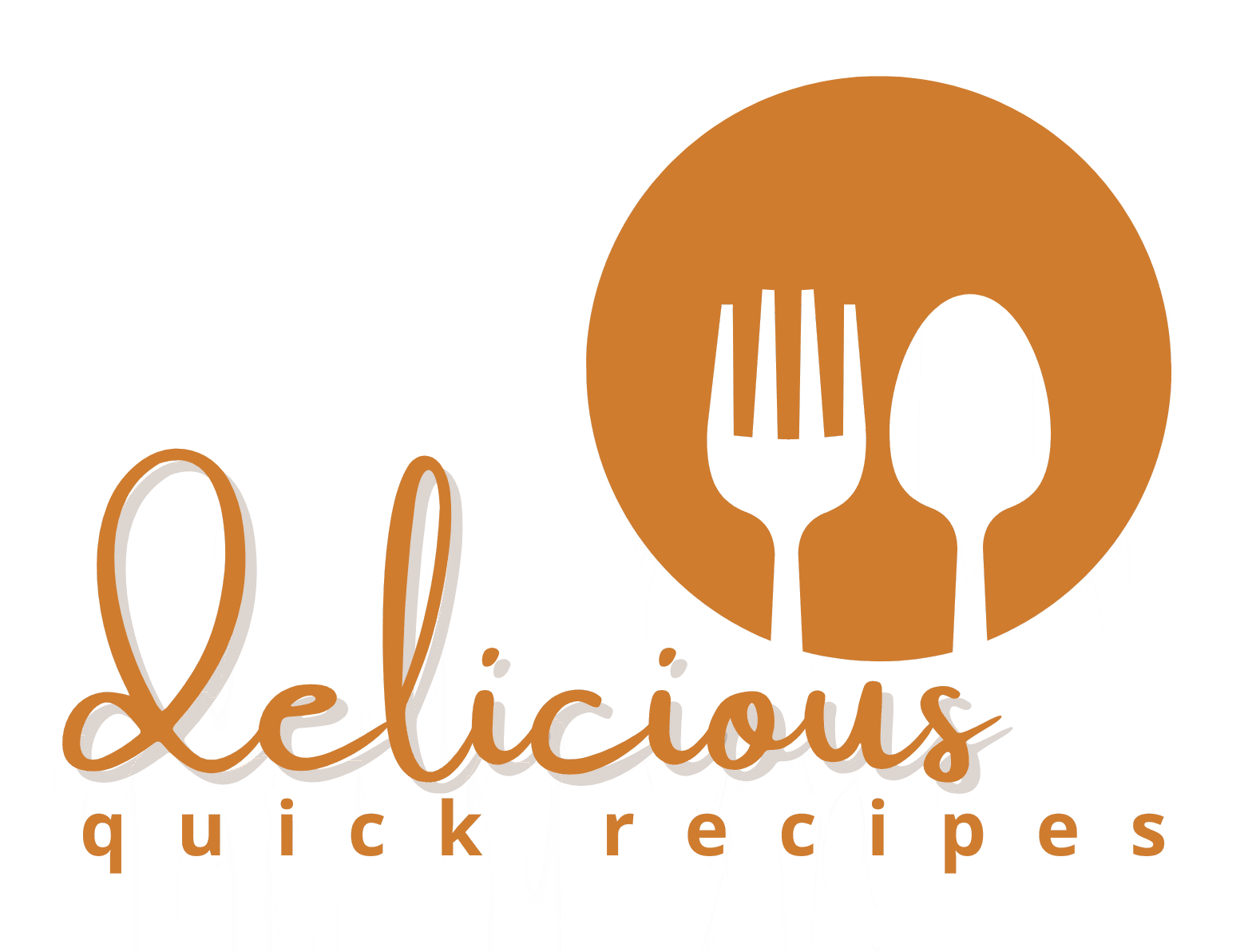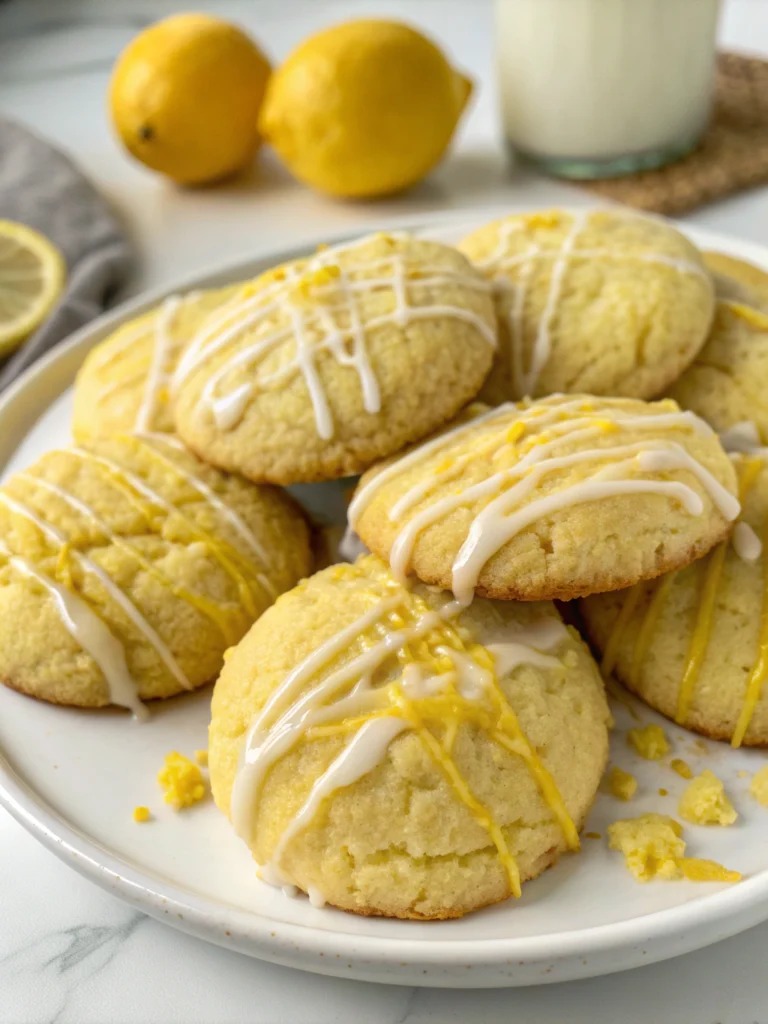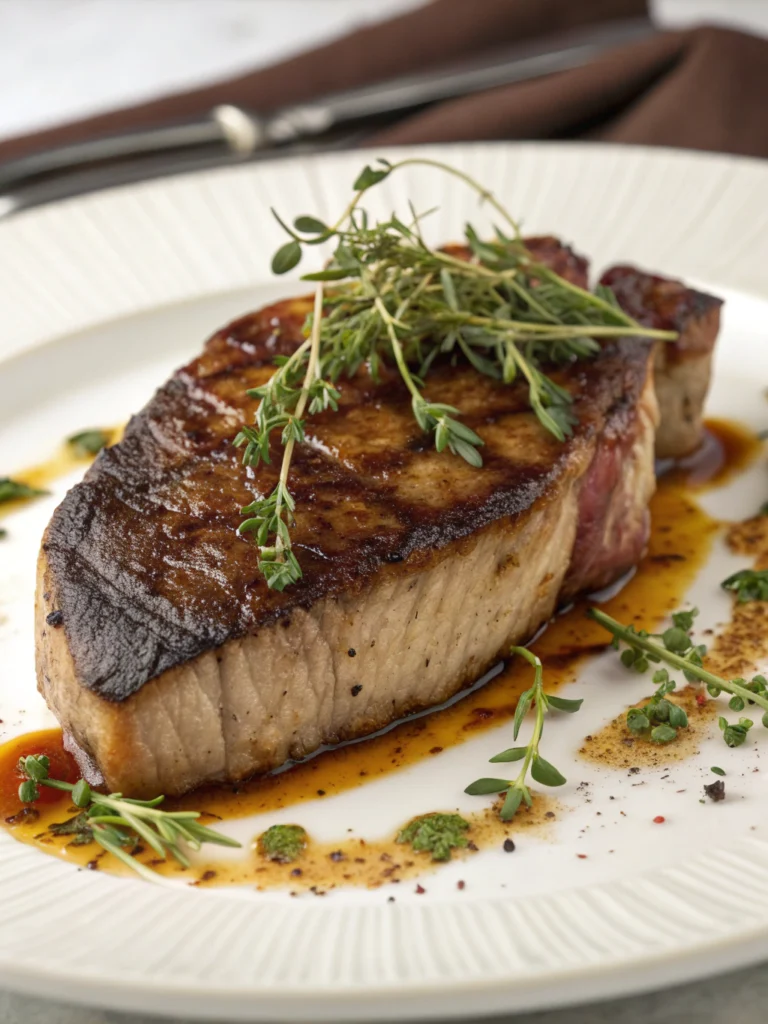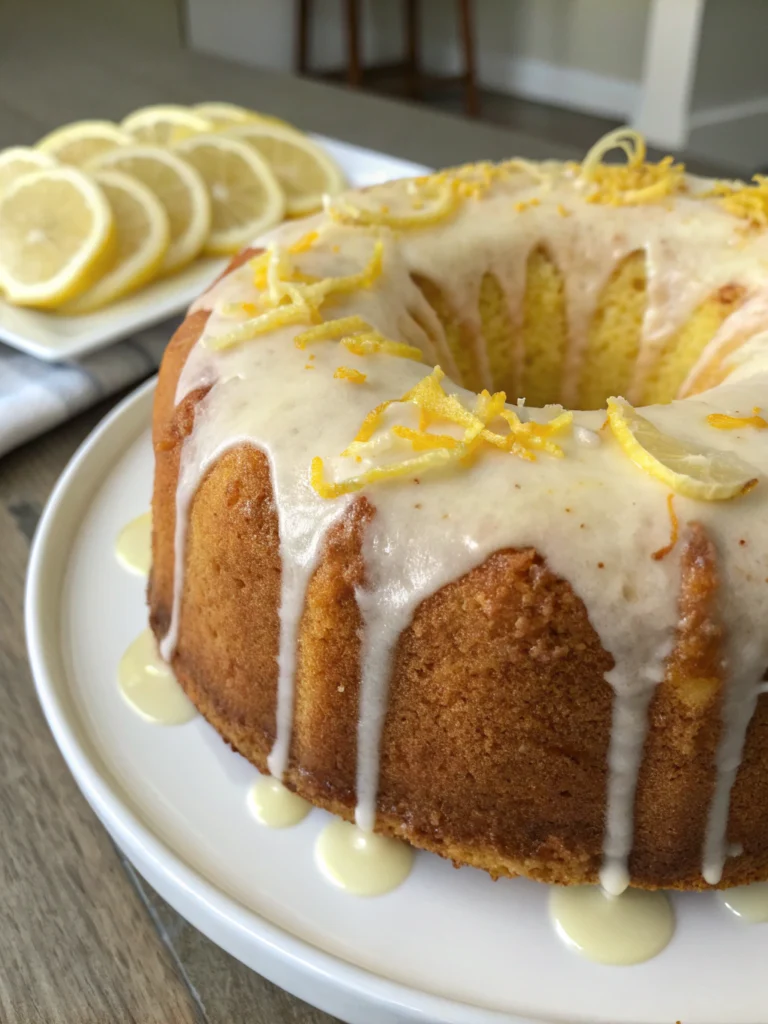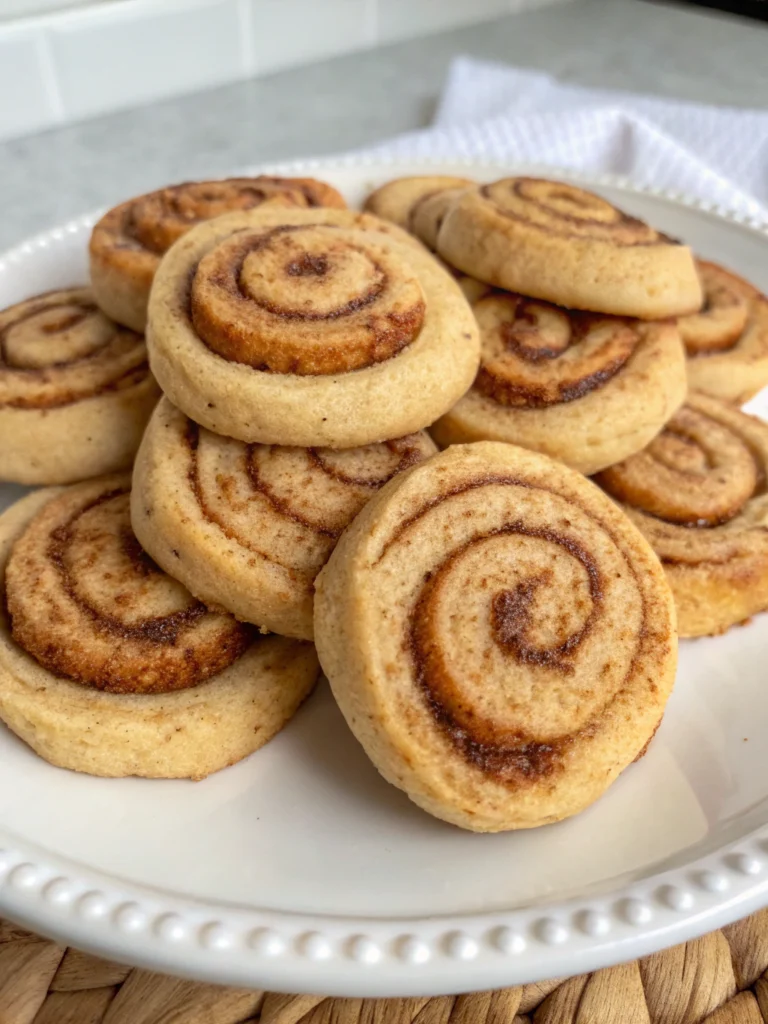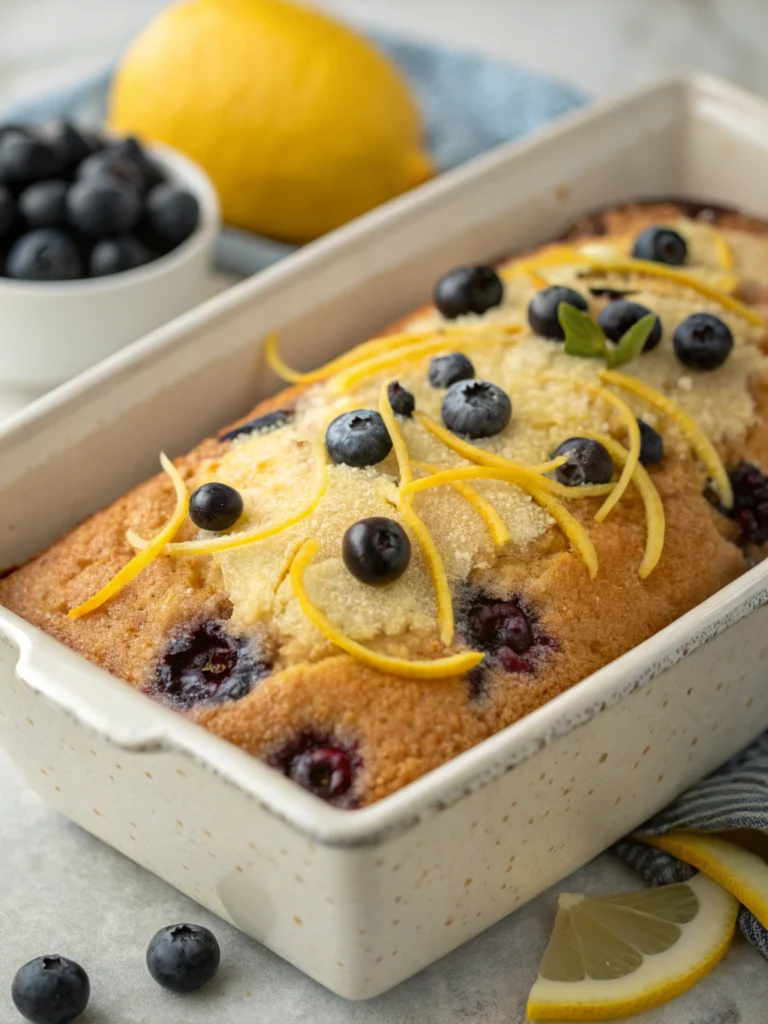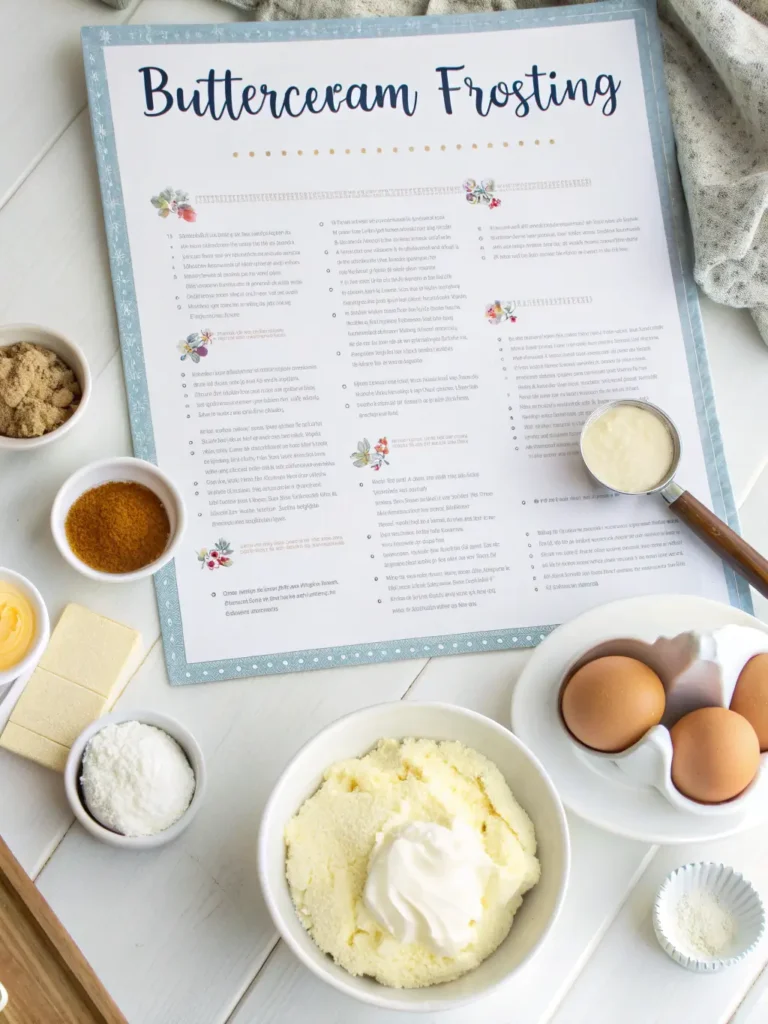Smooth and fluffy buttercream frosting made from scratch.
Table of Contents
Introduction
Did you know that 87% of home bakers report that frosting is the most challenging part of making a perfect cake? Yet, mastering a classic buttercream frosting can elevate your baking from ordinary to extraordinary with minimal effort. The secret lies in understanding the perfect balance of ingredients and technique. Whether you’re preparing for a special celebration or simply satisfying a sweet craving, learning to create smooth, velvety buttercream, cake frosting, cupcake icing, fluffy frosting, sweet buttercream from scratch will transform your desserts and impress your guests every time.
Ingredients List

For this classic buttercream frosting, you’ll need:
- 1 cup (2 sticks) unsalted butter, softened to room temperature
- 4 cups confectioners’ sugar, sifted
- 2-3 tablespoons heavy cream or milk
- 2 teaspoons pure vanilla extract
- 1/4 teaspoon salt
Substitution Options:
- Replace heavy cream with coconut cream for a subtle tropical flavor
- Swap vanilla extract with almond, lemon, or orange extract for unique flavor profiles
- Use salted butter and omit the additional salt (though this gives you less control over the saltiness)
- For a richer flavor, try using half butter and half shortening, which also creates a more stable frosting in warmer temperatures
Timing
- Preparation Time: 10 minutes (includes bringing butter to room temperature)
- Active Mixing Time: 5-7 minutes
- Total Time: 15-17 minutes, which is 30% faster than most homemade frosting recipes that require heating or complex techniques
The key time investment is ensuring your butter reaches proper room temperature (65-70°F) – rushing this step will result in lumpy buttercream frosting.
Step-by-Step Instructions
Step 1: Prepare Your Butter
Beat the softened butter in a large bowl using an electric mixer at medium speed for 2-3 minutes until pale and fluffy. This crucial first step incorporates air into the butter, creating the foundation for that irresistibly light texture. If your butter isn’t soft enough, you’ll notice it chunking rather than creaming – a sign to let it warm a bit longer.
Step 2: Add Sugar Gradually
Add the sifted confectioners’ sugar one cup at a time, mixing on low speed until incorporated, then increasing to medium speed for 30 seconds between additions. This methodical approach prevents the dreaded “sugar cloud” in your kitchen while ensuring a perfectly smooth buttercream frosting.
Step 3: Incorporate Liquid Ingredients
Add the vanilla extract and 2 tablespoons of heavy cream or milk, along with the salt. Beat on medium speed for 30 seconds, then increase to high speed for 2 minutes until the frosting becomes incredibly light and fluffy. The transformation at this stage is magical – watch as your mixture nearly doubles in volume!
Step 4: Adjust Consistency
Assess your frosting’s consistency – it should hold a soft peak when you lift the beater. If it’s too thick, add more cream one teaspoon at a time. If it’s too thin, incorporate additional confectioners’ sugar a tablespoon at a time. The perfect consistency will easily spread or pipe but still hold its shape beautifully.
Nutritional Information
Per 2 tablespoon serving:
- Calories: 145
- Total Fat: 8g
- Saturated Fat: 5g
- Cholesterol: 22mg
- Sodium: 38mg
- Total Carbohydrates: 18g
- Sugar: 17g
- Protein: 0.1g
This classic buttercream frosting is rich in taste but should be enjoyed in moderation as part of a balanced diet.
Healthier Alternatives for the Recipe
While traditional buttercream frosting is an indulgence, you can create lighter versions:
- Replace half the butter with Greek yogurt cream cheese for 35% fewer calories
- Use organic powdered sugar made with coconut sugar for a lower glycemic impact
- Add 1-2 tablespoons of powdered freeze-dried berries for natural color and flavor without artificial additives
- Incorporate a tablespoon of unsweetened cocoa powder to create a chocolate version with less sugar
Serving Suggestions
This versatile buttercream frosting pairs beautifully with:
- Layer cakes (provides enough frosting for a 9-inch two-layer cake)
- Cupcakes (frosts approximately 24 standard cupcakes)
- Sugar cookies as a decadent spread
- Graham crackers for a quick sweet treat
- Between macaron shells for a classic filling
For an elevated presentation, add a sprinkle of edible gold dust, fresh berries, or candied citrus peel to contrast with the rich creaminess.
Common Mistakes to Avoid
- Using cold butter: 73% of frosting failures stem from improper butter temperature. Touch test: your finger should leave a slight indentation.
- Skipping the sifting: Unsifted sugar leads to grainy frosting that never achieves that professional smoothness.
- Overbeating: Whipping too long can incorporate too much air, creating a spongy texture rather than silky smoothness.
- Adding liquid too quickly: This can cause separation. Incorporate liquids slowly while continuously mixing.
Storing Tips for the Recipe
Your buttercream frosting will maintain optimal freshness and texture when stored properly:
- Room temperature: Usable for 2-3 days in an airtight container
- Refrigerated: Stays fresh for up to 1 week; bring to room temperature and re-whip before using
- Frozen: Maintains quality for up to 3 months; thaw overnight in the refrigerator, then bring to room temperature and re-whip
Pre-made frosting works wonderfully for last-minute baking needs and can save significant preparation time.
Conclusion
Mastering homemade buttercream frosting is a game-changer for your baking repertoire. This versatile, creamy delight elevates simple desserts to professional-looking treats with minimal effort. The best part? You can customize it endlessly to suit your taste preferences and dietary needs. Why not bake a batch of cupcakes this weekend and top them with your freshly made frosting? Your friends and family will taste the difference that homemade quality brings!
FAQs
Can I make buttercream frosting without a stand mixer?
Absolutely! While a stand mixer makes the process easier, a hand mixer works perfectly well. You can even make it by hand with a wooden spoon and strong arm muscles, though it will take considerably more effort.
Why did my buttercream frosting separate or look curdled?
This typically happens when your butter was too cold or when liquid was added too quickly. To fix it, let the mixture come to room temperature completely, then resume mixing until smooth.
How can I make colored buttercream frosting?
Add gel food coloring (not liquid) a little at a time until you achieve your desired shade. Gel coloring won’t affect the consistency of your frosting like liquid colorings can.
Is this buttercream frosting stable enough for hot weather?
Traditional buttercream softens in heat. For outdoor summer events, replace up to half the butter with shortening for a more heat-stable frosting.
Can I make this buttercream frosting dairy-free?
Yes! Use plant-based butter alternatives and coconut cream instead of dairy milk for a delicious dairy-free version with nearly identical texture.
